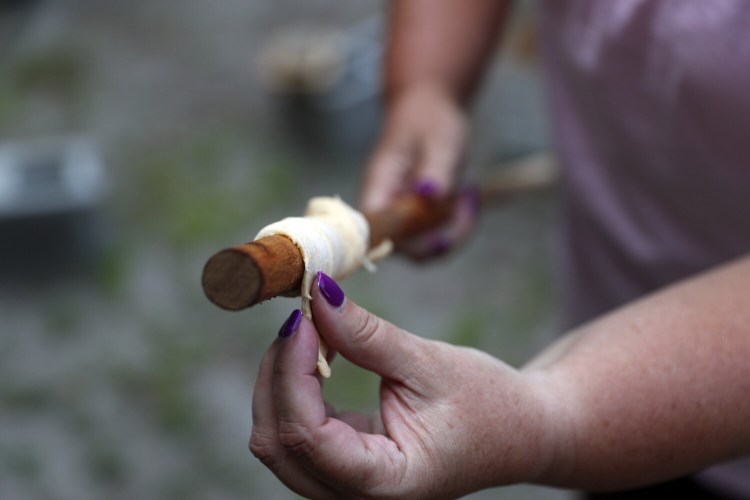I pulled together this quick campfire cooking checklist of sorts, based on my interviews and my own experience. Here goes:
Research the fire rules at your campsite. Never assume.
Review safety. For the Girl Scouts of Maine, this includes keeping long hair out of your face and away from the fire, ensuring no more than four people are near the fire at any one time, and not dressing in polar fleece, a highly flammable material.
Decide how and what you’d like to cook: For best quality and extravagance, use a Dutch oven. If you’re short on time and patience, use a camp stove. For fast flame cooking, choose a recipe – like dough boys or pita pizzas – that uses pre-cooked ingredients and can be ready in under a half hour. Can’t agree on the meal as a group? Make individual foil packets to stuff with meat, vegetables, potatoes or whatever else you want.
Build your fire. My go-to method is a log cabin fire. If needed, use a fire starter made from wax, egg carton and pine shavings. Keep your fire small, remembering you need to stay up until it burns out completely. Keep a bucket of water with you a few feet from the fire for dousing should things get out of control.
Wait for the flames to go down: The best cooking is done over hot coals, not raging flames.
Compile your ingredients before you start cooking. Pro tip: Compile dry ingredients for breads, desserts or pancakes before you leave home, combining them in labelled plastic bags.
Get cooking!
Wait, patiently and vigilantly. Very patiently. Campfire cooking usually takes way longer, waaaay longer, than cooking in the comfort of your kitchen. Preferably get started an hour before hunger strikes – at least.
Enjoy! Most things taste better when cooked over an open fire.
Send questions/comments to the editors.



Comments are no longer available on this story